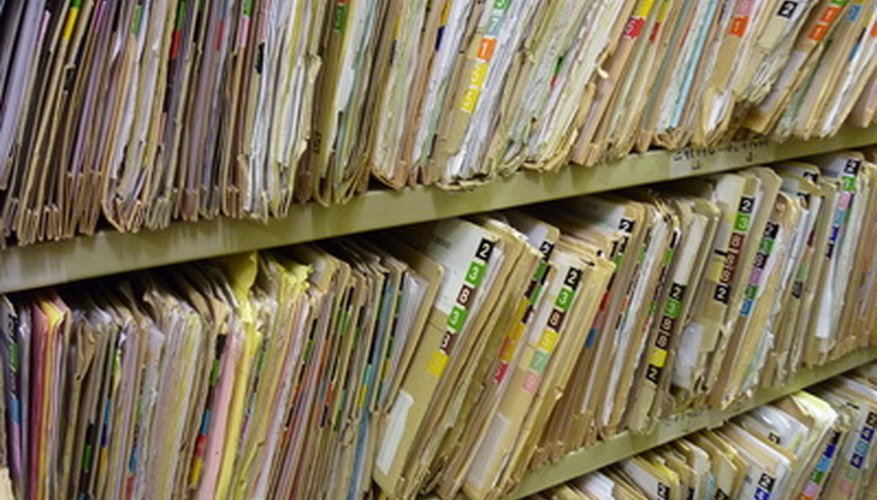While offices have historically used the more common vertical filing cabinets, many offices are now switching to lateral filing systems. Lateral filing systems take up more floor space than vertical filing systems. However, there are several advantages to using lateral filing systems, including efficiency, ease of access and versatility that allow you to access your files faster and easier than with vertical files.
Efficiency
Lateral filing cabinets can hold more files per drawer than vertical cabinets. These systems usually have a larger storage capacity and are more balanced than vertical systems, allowing them to hold more records without the risk of toppling because of an overcrowded, heavy drawer. Lateral cabinets are meant to easily accommodate both letter- and legal-sized files, meaning you won't need different filing systems for each type of document.
- While offices have historically used the more common vertical filing cabinets, many offices are now switching to lateral filing systems.
- These systems usually have a larger storage capacity and are more balanced than vertical systems, allowing them to hold more records without the risk of toppling because of an overcrowded, heavy drawer.
Ease of Access
Lateral cabinets have the added benefit of allowing you to easily view all files in a drawer at once, without having to thumb through hundreds of files to get to the one you need. These cabinets allow you to view all of the drawer's contents without pulling the drawer out completely, which works well in environments with limited space or a high volume of foot traffic.
Versatility
Lateral filing cabinets allow you to organise your files in two different ways. The more traditional use of lateral cabinets is to organise your records from one side of the cabinet to the other, but most lateral cabinets also come with inserts that allow you to file front to back using several rows per drawer. This versatility allows you to set up your files in a way that best suits your needs.
